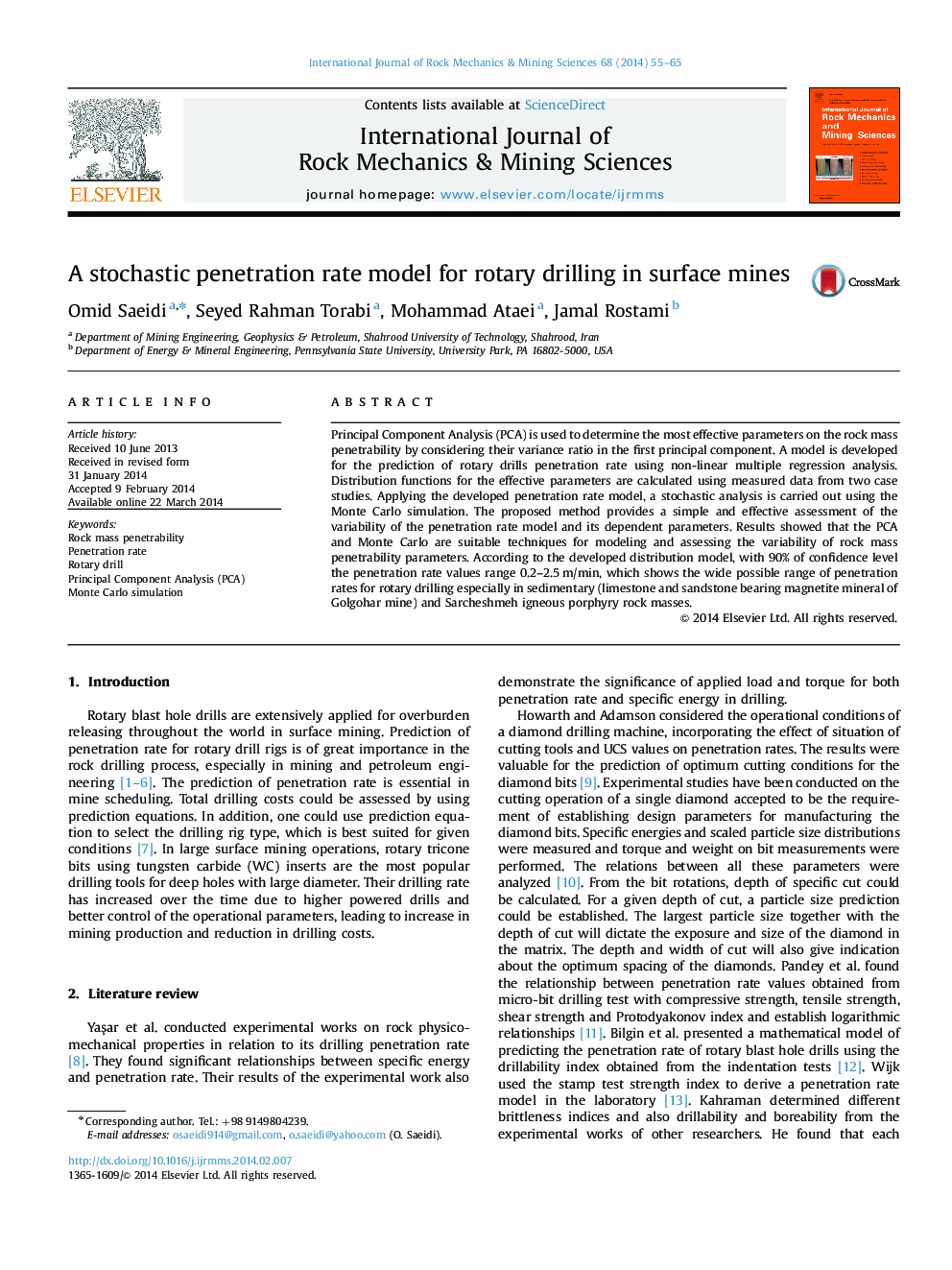| Article ID | Journal | Published Year | Pages | File Type |
|---|---|---|---|---|
| 809159 | International Journal of Rock Mechanics and Mining Sciences | 2014 | 11 Pages |
•Effective rock mass and drill parameters were determined via principal component analysis.•Non-linear multiple regression used to relate parameters to penetration rate for rotary drills.•A stochastic analysis performed using the MC method to obtain probable ranges for the penetration rate model.•Comparing the presented models with measured data from field showed reasonable agreements.
Principal Component Analysis (PCA) is used to determine the most effective parameters on the rock mass penetrability by considering their variance ratio in the first principal component. A model is developed for the prediction of rotary drills penetration rate using non-linear multiple regression analysis. Distribution functions for the effective parameters are calculated using measured data from two case studies. Applying the developed penetration rate model, a stochastic analysis is carried out using the Monte Carlo simulation. The proposed method provides a simple and effective assessment of the variability of the penetration rate model and its dependent parameters. Results showed that the PCA and Monte Carlo are suitable techniques for modeling and assessing the variability of rock mass penetrability parameters. According to the developed distribution model, with 90% of confidence level the penetration rate values range 0.2–2.5 m/min, which shows the wide possible range of penetration rates for rotary drilling especially in sedimentary (limestone and sandstone bearing magnetite mineral of Golgohar mine) and Sarcheshmeh igneous porphyry rock masses.
